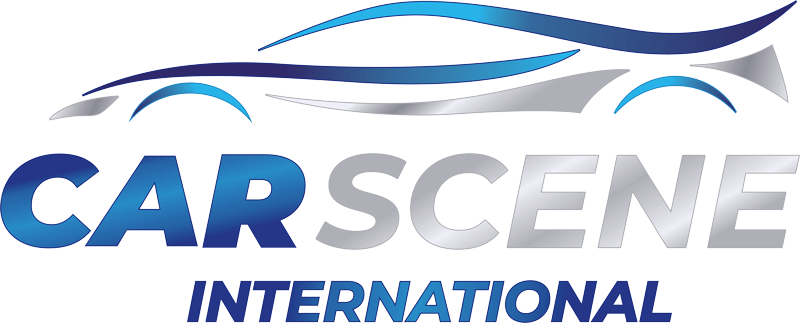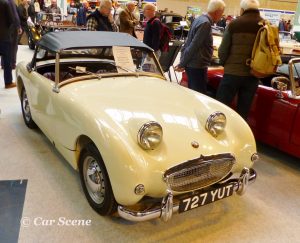
May 2018
| The Factory Coupes It must be said that Gerry Coker got it exactly right when he sketched out the original design for the Healey 100. Gerry has often said that DMH was not totally convinced at the time. This was probably because he was acutely aware of the fact that the whole future of the Donald Healey Motor Company rested upon the success of this new car. His nervousness was probably heightened by the realisation that the design was so different to anything that Healey had produced in the past; the Westland, Elliot and Tickford bodied cars, designed by Ben Bowden, had been praised for their sleekness, how would people and the press in particular, react to this radically different design? As we now all know he need not have worried, the motoring public and the press fell instantly in love with the design. Most importantly, Leonard Lord, C.E.O. of the Austin Motor Company was enchanted by it, enough to buy the design and add his company’s name to the car giving it the nomenclature, Austin Healey 100. Many auto industry commentators said at the time that the design had been influenced by Italian sports car design, Jerry Coker himself said that he had been so influenced. I don’t suppose any of the above is news to most of the readers of this Bulletin, it has been written so many times before; so why have I regurgitated it again now? A good question to which I have an answer, it may not be an answer that many purists are happy with but – I like the coupe versions of the ‘Big Healey’ best! That is why I wanted to set the scene by referring to the original Gerry Coker design before launching into an article based upon the BN1 (two) and BN7 (two) based factory built coupes. The BN1 Coupes – OAC 1 and ONX113 Both were the results of design exercises carried out by Gerry Coker under direction from DMH. Donald was ever restless, always looking for different ways to expand the appeal of his cars even though, in this case, he had ceded overall responsibility for production to Austin. The agreement he had struck with Leonard Lord did allow him to build ‘Special Test Cars’ for development purposes. The coupes fell into that category. The coupe body and chassis units were assembled painted and trimmed by Jensen Motors, West Bromwich, from Gerry Coker’s drawings. Further work was carried out in Austin’s Experimental workshop, Longbridge. In reading about these two cars, in differently sourced articles, it seems that there has been some confusion as to which of these cars was first to be produced. It is now generally accepted that ONX 113 (Healey design No. X220) was the first of the two cars to be started on but OAC 1 (Healey design No. X221 was the first to be completed. The two pieces of significant evidence which supports that conclusion is i) OAC1 was registered (road licence) in November 1953 and ONX 113 was registered in December 1953. ii) even more significant, there is a difference in the design of the two hard tops, particularly where the rear of the hard top meets the rear deck of the standard (sic) body. The rear deck of ONX 113 was lifted slightly to give a more pleasing blend with the hard top when fitted. In other words something was learned from the first coupe. Also, whereas OAC 1 had a standard interior ONX 113 had a much modified and refined one. Originally, OAC 1 was painted Ice Blue and ONX 113 had a red main body with black roof. So what happened to them and do they still exist? The answer to the last part of the question is, miraculously, yes they do. The OAC 1 story, in summary – In comparison to ONX 113, OAC 1 had a very hard life, in fact “miraculous” is the right word to use in describing this car’s survival in its original coupe configuration. If you don’t believe in miracles then thank David Matthews for his incredible hard work, dedication and most of all persistence. Read on – As well as the coupe body OAC 1 received a great many other modifications during its time as a DHMCo. test car. These included servo operated disc brakes all round and later on it was fitted with a Morris 6 cyl. engine which was to evolve into the BMC ‘C’ series engine. The car continued to be used for development purposes until 1962 when it was sold to a friend of Donald’s, a Mr Phillip Fotheringham -Parker. Little is known of its history until around 1975 when it was owned by Alan Cook located in the English Midlands. He decided to remove the Coupe’s roof. This work was undertaken by Everards, Leamington, now JME, located in part of the old DHMCo. ‘Cape Works’ in Warwick. After several other changes of ownership, in its topless condition, in the first half of 1981 it was bought by David Matthews (David supplied most of the photos shown below). The car was in a pretty sorry state by that time. David sold the car in 1988 having used it successfully in many sporting competitions. In the meantime he had located the original coupe roof panels, in Australia! and after much haggling had them shipped back to the U.K. They were sold, with the car, to Syd Segal who decided to reunite OAC 1 with its long abandoned roof. The work was carried out by Rod Jolly. Unfortunately Syd died and Mike Darcy bought the car. Mike still owns the car today and enjoys entering it in classic car races in the U.K. especially at the Goodwood Revival meeting held annually in September. The mechanical specification has been taken back to near to that which it had when it was first built, for instance, it now has all round drum brakes instead of discs, this is for race classification purposes. The car’s paint scheme is now dark blue lower body with light blue roof.   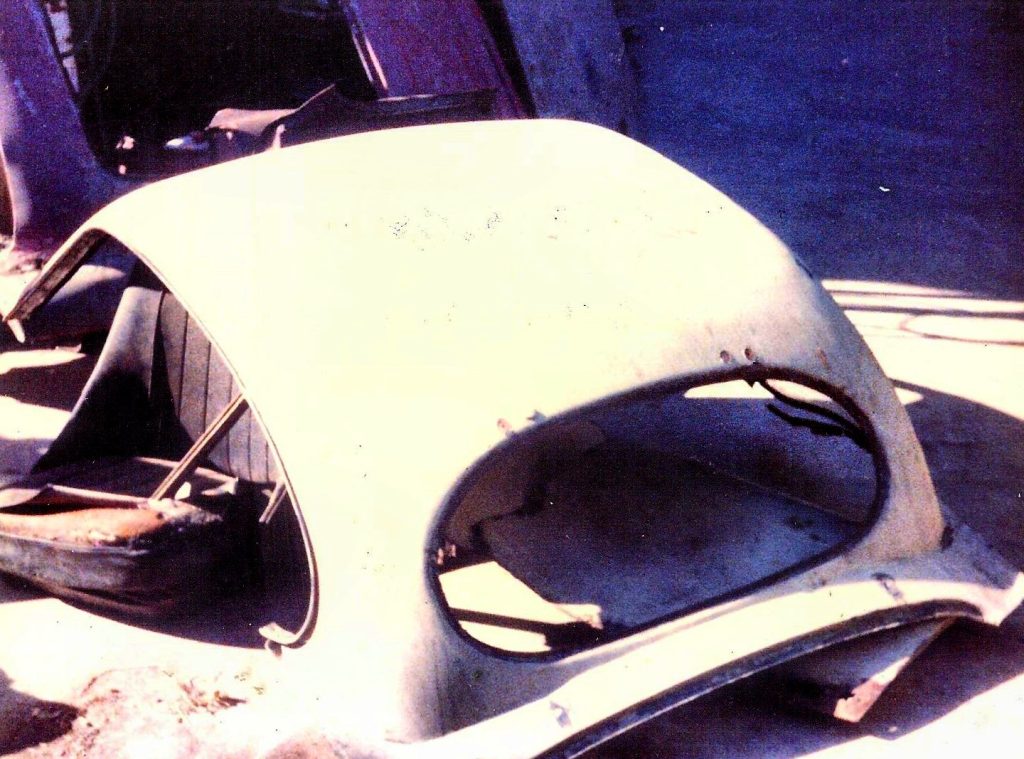    
The ONX 113 story, in summary – As alluded to above, ONX 113 became the ‘favoured child’ in terms of the type of development it received. It became a true gentleman’s Grand Touring car epitomised by its sumptuous cream leatherette seat and door panel trim which was also carried over to the fascia panel. It had a centre console and different, fascia mounted, switches. Mechanically, the most significant changes, as compared to the standard car, were the fitting of all round Dunlop disc brakes and an ‘S’ specification engine. It is not at all surprising that DMH used ONX 113 as his personal car for nine years. As a result he was able to provide invaluable feed back on the success, or otherwise, of the various development changes executed on this car. Many of them found their way onto future production cars. No brutal roof removal for this car, no gruelling competitions entered. It was eventually sold by DHMCo., in July 1962, to a private buyer, Mr. Alexander Hamilton. In 1972 ONX 113 was purchased by Arthur Carter for his burgeoning classic car collection and until 2015 it spent a pampered life. In December 2015 ONX 113 together with a 1959 Works Rally AH 3000, the last two Austin Healeys from the Arthur Carter Collection, was auctioned by Bonhams. It was bought by a Dutch collector who has since generously put it on display at the Healey Museum, Vreeland, NL. At sometime in its life the black roof was painted red to match the lower part of the body. I am most grateful to David Matthews for his unstinting support to me in writing this summary. David has written a complete report on these vehicles which has been serialised in a number of AH Club magazines across the Globe. 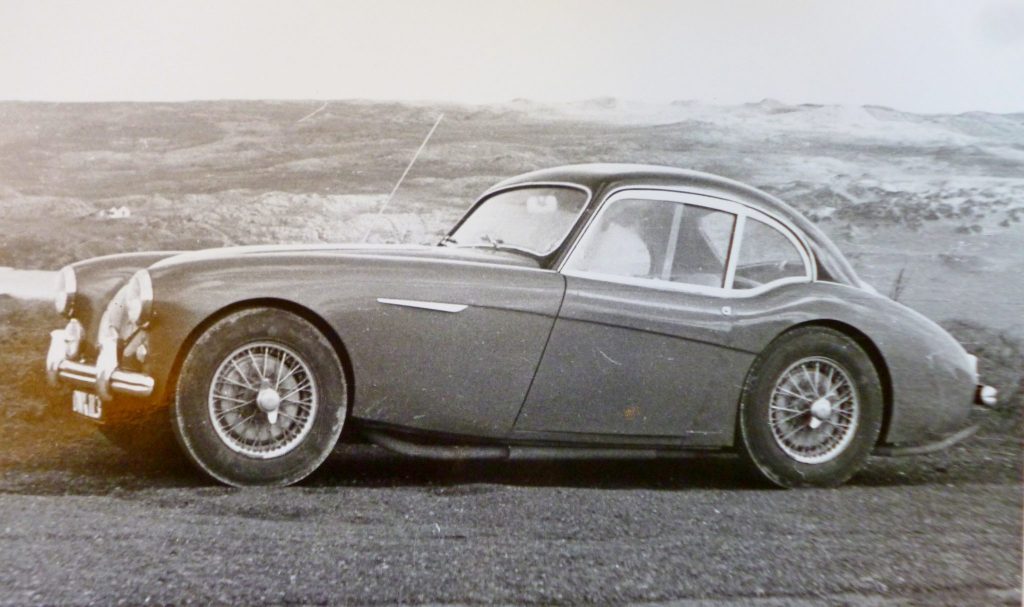
 The AH 3000 Coupes The idea of introducing a coupe version of the ‘Big Healey’ never went away as far as Donald and Geoffrey were concerned and the next attempt came with the introduction of the Austin Healey 3000. The first was built around a Sebring chassis with all round Girling disc brakes and race tuned engine. Geoff says in his book ‘The Specials’ that he and his father “schemed a one-piece roof line and Doug Thorpe carried out the detail design.”. The design incorporated a roll over bar in the roof panel. The body as, usual, was built by Jensen Motors, West Bromwich. The Healeys’ idea of offering an Austin Healey 3000 Coupe model, in addition to the convertible, was met with great interest from George Harriman, the then BMC Chairman. He asked Austin’s chief stylist, Dick Burzi, to look at the Healey designed coupe to see if it could be turned into a design that would be more economical to produce. Burzi used an older, non Sebring, car on which to base his design which was simpler and therefore less costly to build than the Healey version. Jensen were asked to quote for building a series run of coupe bodies. Geoff suggests, in his book, that Jensen were a little greedy in their quote. Whatever, Harriman and his team considered that the cost of building a coupe version of the AH 3000 as compared with promoting the recently introduced MGB GT and forthcoming MGC could not be justified. The Healeys bought the Dick Burzi (red) car from Austin and used it for development purposes, as they did with the (blue) car that they had designed themselves. The latter car was used by both DMH and Geoff (see photo below). They were eventually sold to Keith Brading of the Frogeye Car Company, Ryde, Isle of Wight, fame. He in turn sold them to Mr. Donald Humphries who lives in the English West Midlands and still owns the car. I am told that the colour of the Austin styled car was originally ‘aubergine’ (dark purple) but was painted red at a later date .  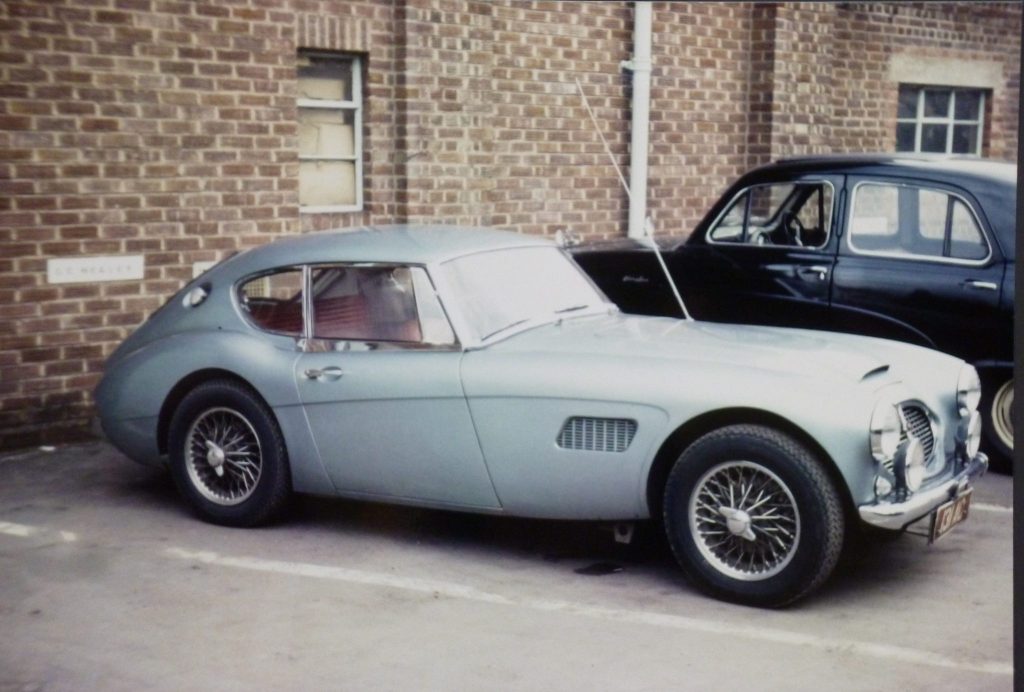
So, yet again the idea of putting a ‘Big Healey’ coupe into production was still born. But not before four wonderful and now, much sought after, AH Coupes had been made. The items (marked thus**) are credited on the website as ‘Part of the Warwick Healey Motor Company Archive held at Warwickshire County Record Office.’ See the ‘Objectives and Legal‘ link at the bottom of the page. |
Another AH 3000 based Coupe Concept Car Austin-Healey 3000 Firrere concept Designed by Henner Werner, Pio Manzoni, and Michael Conrad (Hochschule für Gestaltung in Ulm, Germany) as an entry into a design competition organised, in 1961, by L’Année Automobile (The Lausanne, Switzerland, based Automobile Yearbook). One of the choices of car upon which the design was to be based was an Austin Healey 3000. Fortunately for us, the three young designers chose that car. The competition was organised to celebrate the 10th anniversary of The Automobile Year Book. Probably the greatest incentive for entering the competition was the fact that Pininfarina, the accomplished Carrozzeria of Turin, Italy, had offered to build the winning design. This was in addition to a monetary prize of SF 10K. The Firrere was declared the winner by the distinguished panel of judges and Pininfarina built this car in 1962. It was unveiled at the Earls Court Motor Show (London Motor Show) in October 1962. To find out more go to Further Reading below. |
| People (carried over from last month) Joe Armour (Aus.) It was great to hear from Joe and this is what he had to say ( he was responding specifically to Bulletin V which featured the Streamline Sprites) Nick I have enjoyed the Warwick Healey newsletters todate and look forward to many more. You maybe interested in my two cars which are rather significant in the Healey timeframe. No1 The 1965 Sebring 12 Hour 3000 driven by Australian Paul Hawkins and UKs Warwick Banks. Then sold to works driver Clive Baker. After three further owners I purchased the car when advertised in MotorSport in 1976 and it arrived in Australia in 1977 from USA. Geoff Healey inspected the car when he and Margot were guests of the AH clubs. I do have the UK log book for this car. It is still painted as Clive Baker had it. The extended guards were modified at Arthur Carter’s workshop. License number DAC953C. This then is the last works 3000 race car built and raced by Healeys. No.2 The Sprite first licensed as HNX456D in 1966 and raced at Sebring and LeMans. Raced at Sebring and LeMans again in 1967 and shown at the London Motor Show that year. In 1968 the car was modified to have a cross flow head and Lucas fuel injection and was issued a new license number RUE714G. ( Some pics of SR.37 are shown with the old Sprite number HNX456D! ) The car was shown at the 1968 London Motor Show and it had been awarded the ‘MOTOR’ trophy for Best Finishing British Car. This trophy was recently auctioned with other Healey family items and is now on show at the Dutch museum. This car is therefore the last Austin Healey entered and raced car. Obviously the SR/XR.37 is the last HEALEY. This car was owned and used in UK club racing by the late Ian Polley who owned the car until he agreed to sell to me in 2000. Some time in the future when I have surveyed the archives I would like to purchase some of the original photographs of both cars. I was a first night member of the Austin Healey Owners Club of NSW ( Sydney ) in March 1969. My first car at age 17 was a 100/6 Regards Joe Armour – Historian AHOC of NSW and Life Member.
Thanks Joe, I hope this encourages others to tell their ‘Healey’ stories. |
| Further reading – Ferrere Coupe – https://www.aronline.co.uk/concepts/concepts-and-prototypes/ado30-sports-car-project/ Warwick Healey Archive Catalogue pdf – https://apps.warwickshire.gov.uk/api/documents/WCCC-863-738 |
Subscribe for future editions of the WHMCA Bulletin for free
Nick
